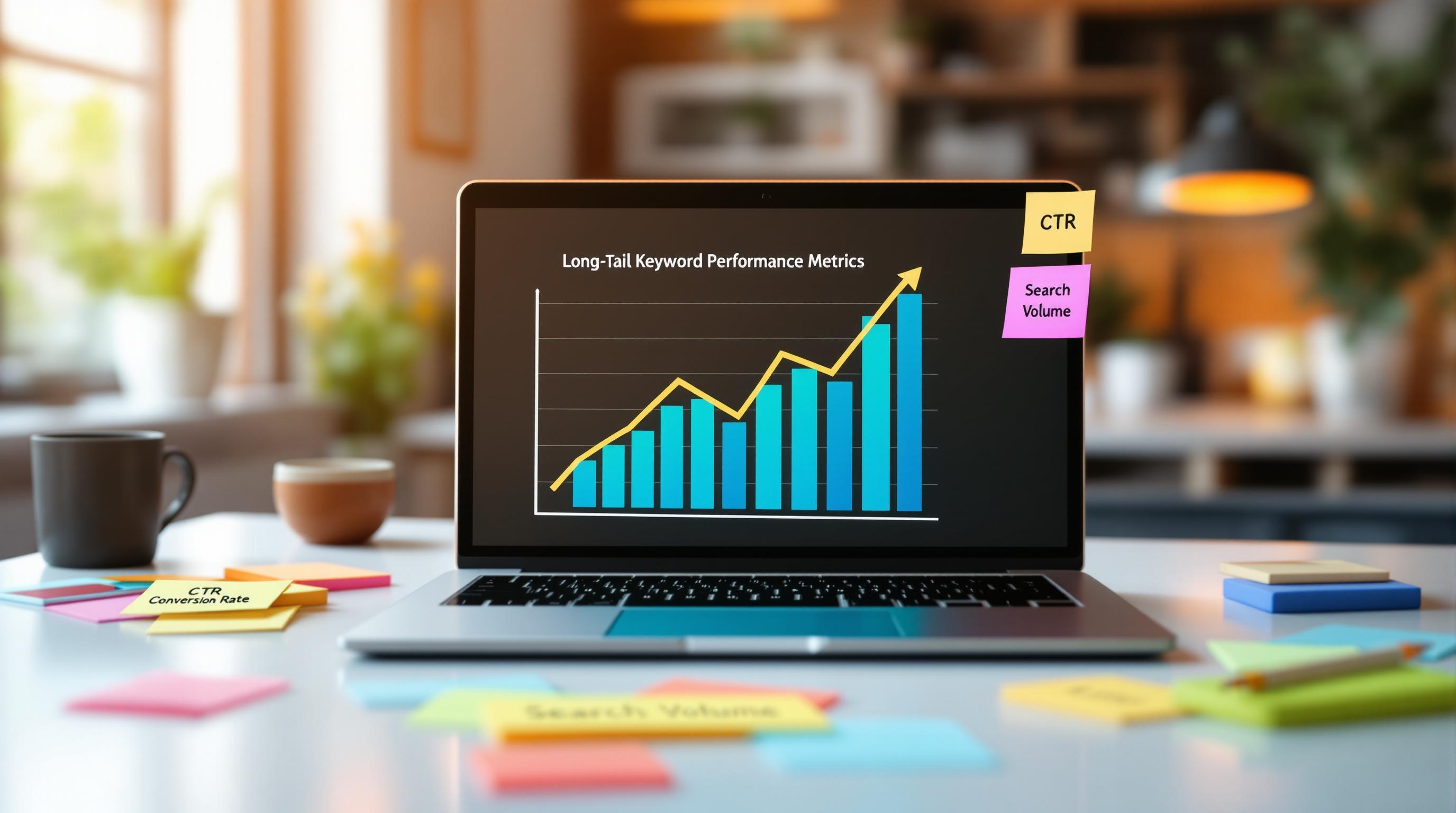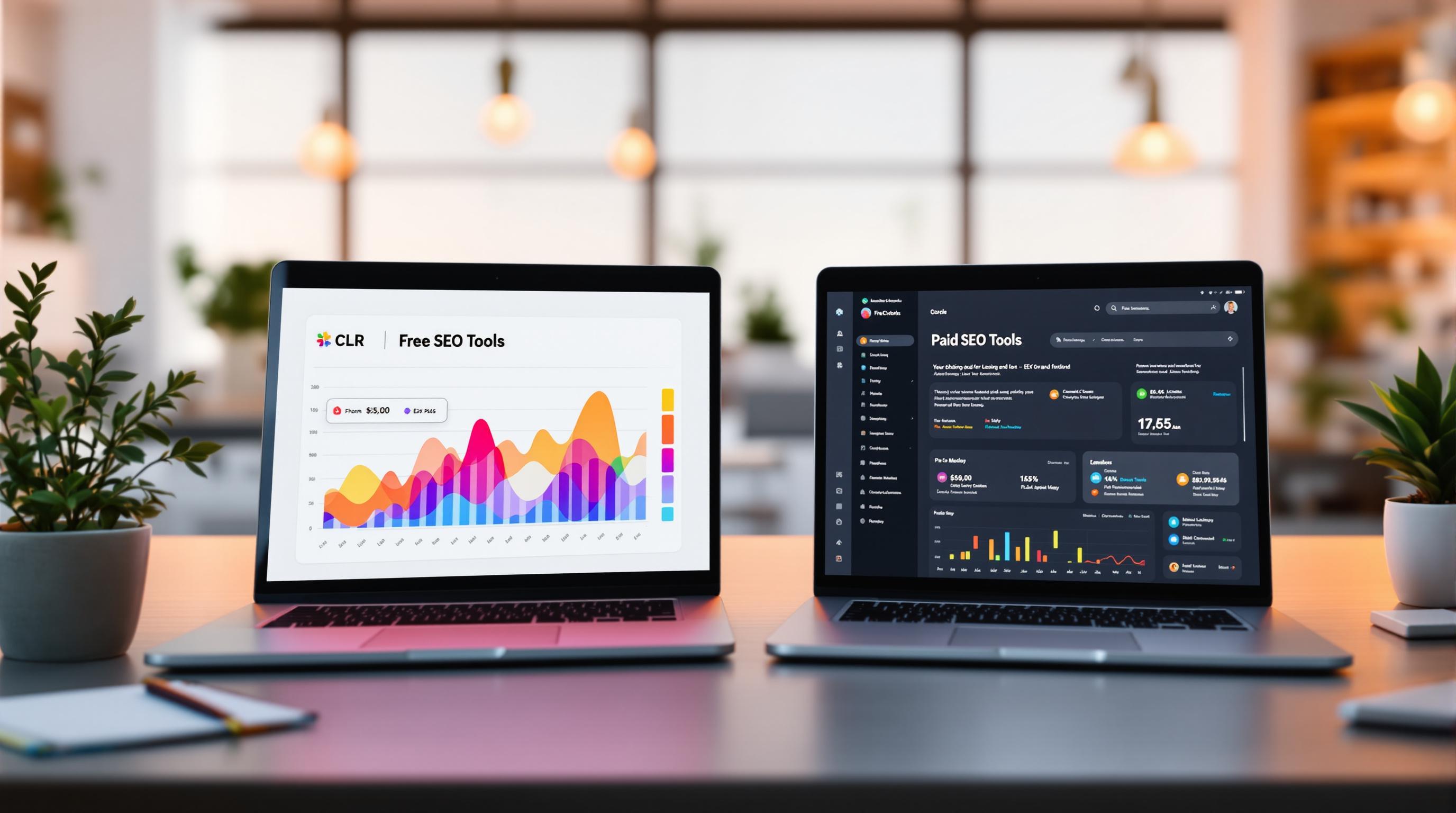Multi-touch attribution helps B2B marketers track how different SEO touchpoints contribute to conversions in long and complex sales cycles. It’s an alternative to the last-click model, recognizing that multiple interactions often influence a purchase. Here’s a quick overview of common attribution models and their use cases:
- Linear: Splits credit equally across all touchpoints. Simple but may not reflect true influence.
- Time Decay: Gives more weight to recent interactions. Ideal for long sales cycles.
- U-Shaped: Focuses on first and last touchpoints while assigning partial credit to mid-funnel interactions.
- W-Shaped: Adds opportunity creation as a key milestone for tracking multi-stage sales journeys.
- Custom: Tailored to unique business needs for maximum accuracy.
Quick Comparison
| Model | Best For | Key Advantage |
|---|---|---|
| Linear | Simple campaigns | Equal credit across all touchpoints |
| Time Decay | Long sales cycles | Prioritizes recent interactions |
| U-Shaped | Lead generation | Highlights discovery and conversion stages |
| W-Shaped | Complex sales processes | Tracks multiple key milestones |
| Custom | Unique business requirements | Fully tailored to specific needs |
Choose the right model based on your sales cycle, decision-making process, and available resources. The article explores each model in detail, including strengths, limitations, and implementation tips.
Multi-Touch Attribution: Approaches and the Tradeoffs
1. Linear Attribution
Linear attribution is one of the simplest ways to track B2B SEO performance. It splits conversion credit equally across all touchpoints in a customer’s journey. For businesses with complex sales cycles, this model helps establish a starting point for understanding how different interactions contribute to conversions.
In this model, every touchpoint gets the same share of credit, no matter its type. For example, if a customer journey includes five touchpoints, each one would receive 20% of the credit.
Here’s how linear attribution might look for common B2B SEO touchpoints:
| Touchpoint Type | Attribution Credit | Tracking Focus |
|---|---|---|
| Initial Blog Visit | 20% | Organic search entry points |
| Resource Downloads | 20% | Content engagement metrics |
| Case Study Views | 20% | Evaluating social proof impact |
| Product Pages | 20% | Analyzing feature exploration |
| Contact Form | 20% | Conversion completion tracking |
While straightforward, this method doesn’t always reflect the true influence of each touchpoint. For instance, a prospect’s first interaction with thought leadership content might weigh more heavily in their decision-making process than later interactions, but linear attribution treats all touchpoints equally.
Key Implementation Tips
- Set up analytics tools to consistently track all organic search interactions.
- Clearly define what qualifies as a meaningful SEO touchpoint.
- Measure engagement metrics across various content types.
- Ensure tracking spans multiple devices and browsers.
- Regularly update and fine-tune your tracking parameters.
Limitations to Keep in Mind
- Simplifies the complexity of B2B buying cycles.
- Fails to account for differences in touchpoint influence.
- May undervalue early-stage interactions.
- Assumes all touchpoints matter equally.
- Ignores timing and sequence of interactions.
Linear attribution offers a straightforward way for enterprise B2B organizations to start tracking SEO efforts. However, it doesn’t capture the full complexity of customer journeys. Up next, we’ll explore models that factor in the timing and importance of specific touchpoints.
2. Time Decay Attribution
Time decay attribution gives more weight to recent touchpoints, recognizing their stronger role in driving conversions. It uses a half-life decay formula, meaning credit decreases exponentially the further back in time you go. For enterprise campaigns, choose a 30–90-day lookback window based on your sales cycle.
Here’s how credit might be distributed during a typical 60-day B2B customer journey:
| Days Before Conversion | Touchpoint Type | Attribution Credit |
|---|---|---|
| 1-7 days | Final consultation/demo request | 40% |
| 8-21 days | Product comparison pages | 30% |
| 22-45 days | Technical documentation | 20% |
| 46-60 days | Initial blog post visit | 10% |
Benefits for B2B SEO
This model helps you understand how content performs at different stages of the customer journey:
- Late-stage content: Pages like technical documentation, pricing, and comparison guides often get higher credit since they’re closer to the conversion point.
- Mid-funnel assets: Case studies and in-depth product feature pages receive moderate credit, reflecting their role in guiding decision-making.
- Top-funnel content: Blog posts and educational materials typically get less credit, emphasizing their role in building awareness.
Key Implementation Steps
To make the most of time decay attribution for B2B SEO:
- Set up tracking and parameters: Adjust decay rates and lookback windows to match your sales cycle.
- Analyze by content type: Evaluate how different types of content perform across the funnel.
- Account for seasonality: Keep an eye on how decision-making timelines shift during different times of the year.
Technical Setup
Ensure your system supports cross-domain tracking, custom channel groupings for organic search, and event tracking for content interactions. Maintain UTM parameters across sessions and set cookie durations that align with your sales cycle.
This approach focuses on the most recent interactions, which often have the greatest impact on B2B decisions. Up next, we’ll explore models that address some of the limitations of time decay attribution.
3. U-Shaped Attribution
U-Shaped, or Position-Based, attribution splits credit between key moments in the buyer's journey: 40% goes to the first touch, 40% to the lead-creation touchpoint, and the remaining 20% is shared across intermediate interactions. This model emphasizes the importance of both discovery and conversion touchpoints, addressing gaps left by linear and time decay models. It’s especially useful in the B2B sales process, where identifying impactful content is crucial.
Credit Distribution Framework
| Touchpoint Stage | Credit Weight | Typical B2B SEO Touchpoint |
|---|---|---|
| First Touch | 40% | Blog post or industry insights |
| Middle Interactions | 20% (shared) | Product pages, case studies |
| Lead Creation | 40% | Demo requests, content downloads |
This breakdown highlights the importance of initial discovery and final conversion actions in driving results.
Implementation for B2B SEO
The U-Shaped model helps map how organic search contributes to awareness and lead generation:
- First Touch (40%): A potential customer discovers your software through a blog post covering industry trends or challenges.
- Middle Interactions (20%): They engage with mid-funnel content like technical guides, feature comparisons, or customer success stories.
- Lead Creation (40%): Finally, they convert by downloading a whitepaper or filling out a demo request form.
Technical Configuration
To set up U-Shaped attribution correctly:
- Use Google Analytics 4 to create custom channel groupings for organic search traffic.
- Implement event tracking to monitor first-touch content engagement and lead capture actions.
- Enable cross-domain tracking to ensure seamless data collection.
- Standardize UTM parameters across all organic search campaigns.
Model Strengths
This model works well for B2B SEO campaigns because it:
- Highlights the role of discovery content in attracting potential leads.
- Rewards content that directly drives conversions.
- Keeps mid-funnel content performance visible.
- Aligns with the B2B sales cycle, where research and lead capture are critical steps.
Measurement Considerations
To maximize insights from this model, focus on:
- First-Touch Content: Identify which pieces of content bring in high-quality leads.
- Journey Length: Track the time between first touch and lead creation to refine content timing.
- Channel Interaction: Analyze how organic search works alongside other channels during the buyer’s journey.
This structured approach ensures you’re capturing the full impact of your SEO efforts. Next, we’ll explore how different attribution models compare in their effectiveness.
sbb-itb-5be333f
4. W-Shaped Attribution
The W-Shaped attribution model builds on the U-Shaped model by adding a third key milestone: opportunity creation. While the U-Shaped model focuses on the first touch and lead creation stages, the W-Shaped model highlights the importance of opportunity creation in complex B2B sales. It splits credit across three main stages - first touch (30%), lead creation (30%), and opportunity creation (30%) - with the remaining 10% spread across other touchpoints.
Credit Distribution Breakdown
| Milestone | Credit Allocation | Example in B2B SEO |
|---|---|---|
| First Touch | 30% | Industry research article |
| Lead Creation | 30% | Whitepaper download |
| Opportunity Creation | 30% | Product comparison page |
| Intermediate Touches | 10% (shared) | Blog posts, case studies |
What You Need to Implement It
To successfully use W-Shaped attribution in B2B SEO, you'll need:
- CRM Integration: Sync Google Analytics 4 with your CRM to track data seamlessly.
- Event Tracking: Set up triggers for when opportunities move through stages.
- Cross-Domain Tracking: Ensure consistent data flow between marketing and sales platforms.
- Extended Cookie Duration: Use cookies with a lifespan of at least 90 days.
Tracking Essentials
This model requires sophisticated tracking to cover the buyer's journey:
- Lead Qualification: Track form submissions and content downloads to identify qualified leads.
- Opportunity Stage Monitoring: Set up custom events to capture transitions within the sales pipeline.
- Cross-Channel Integration: Link organic search data with sales qualification events for a full picture.
How to Measure Success
To get the most out of W-Shaped attribution for SEO:
- Analyze content performance at each stage of the buyer’s journey.
- Track how much time passes between touchpoints to refine content timing.
- Identify which organic landing pages drive opportunity creation.
- Evaluate how different content types impact the extended sales process.
Technical Setup
To make the model work, you’ll need to configure several technical elements:
- Create custom channel groupings in Google Analytics 4.
- Set up goal funnels to track movement through sales stages.
- Use enhanced e-commerce tracking to capture B2B conversion events.
- Add custom dimensions to monitor opportunity stage transitions.
This model gives you a clearer view of how SEO contributes to generating sales opportunities, making it especially useful for B2B sales cycles that involve multiple decision-makers. It also lays the groundwork for even more customized attribution strategies.
5. Custom Attribution Models
Custom attribution models are designed to address the specific needs of unique conversion paths. Unlike predefined models like linear, time decay, or U-shaped, these models use historical data and business-specific insights to assign weights to touchpoints. This tailored approach ensures more accurate tracking, especially for businesses with complex B2B sales cycles or data requirements that go beyond standard methods.
How to Build a Custom Model
To create a custom attribution model that delivers results, focus on these key elements:
- Historical Data: Analyze past conversion data to establish a performance baseline.
- Data Analysis: Use tools like machine learning and statistical methods to uncover patterns and determine touchpoint weights.
- CRM Integration: Incorporate detailed sales cycle information to fine-tune how touchpoints are weighted.
- Custom Event Tracking: Identify and track specific interactions that play a critical role in driving conversions.
Steps for Advanced Configuration
- Data Collection: Gather all relevant touchpoint data across the customer journey.
- Model Development: Use algorithms to reflect the patterns observed in your data.
- Validation: Compare the model's performance against historical data and standard attribution models to ensure accuracy.
Technical Setup and Integration
Implementing a custom model requires a solid technical foundation. You'll need reliable tracking tools, seamless integration with analytics platforms and CRMs, and real-time data processing capabilities. To get the most out of your model, connect it with systems like marketing automation tools, business intelligence platforms, content management systems, and SEO tracking tools. This integration provides a comprehensive view of customer interactions and performance.
Model Comparison
Let’s break down the strengths and weaknesses of different attribution models in B2B scenarios and across various buyer stages.
| Attribution Model | Best For | Limitations | Ideal B2B SEO Use Case |
|---|---|---|---|
| Linear | Simple setup, evenly distributes credit | Oversimplifies the buyer journey, hides touchpoint impact | Early-stage SEO campaigns with limited data |
| Time Decay | Prioritizes recent interactions in long sales cycles | Discounts early research, more complex to set up | Enterprise campaigns with sales cycles exceeding 6 months |
| U-Shaped | Highlights initial and final touches while recognizing mid-funnel activity | Uses fixed percentages, doesn’t fully track influence | Content-heavy strategies with clear conversion milestones |
| W-Shaped | Covers multi-stage journeys and opportunity creation | Requires advanced tracking tools, higher costs | Full-funnel campaigns involving multiple decision-makers |
| Custom | Allows tailored weights for specific needs | Resource-heavy and complex to maintain | Suitable for mature organizations with unique conversion paths |
This table provides a foundation for evaluating which model aligns best with your goals and resources.
Model Performance Analysis
When considering performance, time decay is ideal for long-term engagements where recent interactions matter most. On the other hand, linear attribution is perfect for straightforward journeys where simplicity is key.
Implementation Considerations
Choosing the right attribution model requires careful thought. Here are a few key factors to keep in mind:
- Data Quality: Your tracking must be thorough to ensure accuracy.
- Resource Allocation: More advanced models demand a higher investment of time and tools.
- Sales Cycle Length: Models like time decay or custom work better for extended sales cycles.
- Content Strategy: U-shaped models align well with strategies that rely on content to drive results.
Technical Integration Factors
The technical requirements vary significantly between models. Linear attribution integrates easily with standard analytics platforms, making it a low-barrier option. However, W-shaped and custom models often need specialized tools and CRM integration to function effectively. These technical needs should be factored into your decision to ensure seamless implementation.
Recommendations
Use time decay attribution to highlight later-stage interactions in long sales cycles. This method helps showcase the impact of touchpoints throughout the often complex B2B decision-making process.
How to Build a Custom Attribution Model
Follow these steps to create a custom attribution model tailored to your needs:
- Identify key touchpoints and assign weights based on their influence on conversions.
- Set up seamless integration with analytics platforms, CRM systems, and ensure data validation processes are in place.
Tackling Common Implementation Challenges
Once your model is defined, address typical obstacles with these strategies:
- Use standardized UTM parameters to ensure data consistency.
- Resolve attribution gaps by implementing cross-domain tracking.
- Handle technical constraints with third-party tools, such as those featured in the Top SEO Marketing Directory.
Choosing the Right Attribution Model
Use this table to match your business needs with the most suitable attribution model:
| Business Characteristic | Recommended Model |
|---|---|
| Long sales cycles | Time Decay |
| Involvement of multiple decision-makers | W-Shaped |
| Limited resources for analytics | Linear |
| Heavy reliance on content | U-Shaped |
| Complex customer journeys | Custom |
Start with the model that aligns with your main priorities. As your tracking and analytics improve, refine your approach to ensure your SEO investments drive better results over time.


